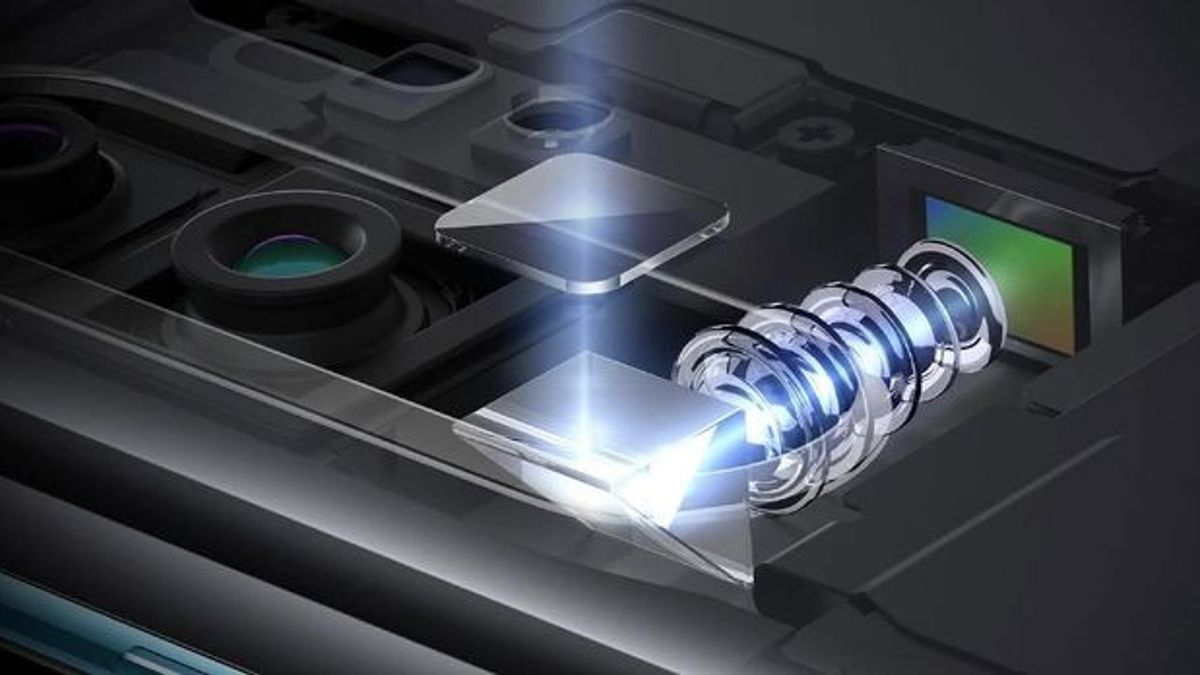JAKARTA - Periscope camera technology is the main attraction for smartphone vendors. Because with the embedded periscope technology, smartphone cameras can enlarge the image optically.
As a result, smartphone cameras can take pictures further, through periscope camera technology. Several vendors have also embedded technology that has this super zoom capability.
Launching the GSM Arena, a new generation periscope lens for telephoto will actually appear at this year's Mobile World Congress (MWC). The term periscope camera is taken from the name of the eponymous instrument used on submarines which allows the user to see objects above sea level, or anything that is not in direct line of sight.

Basically this camera uses a combination of mirrors or prisms to bend light. Smartphone makers have used the same concept to create a periscope camera module in order to increase the zoom range.
The shape of the lens body protrudes from the main kit and also extends in use. Its function is to push the lens forward, thus providing optical zoom without affecting image quality when shooting photos.
Unfortunately to embed this kind of optical zoom mechanism, smartphone vendors have to sacrifice the slim dimensions of the cellphone so that it is bigger. At least in order to provide enough wiggle room for the optical lens before taking the picture.
The optical mechanism of this periscope camera has been adapted to the Huawei P30 Pro, Samsung Galaxy S20 Ultra and Oppo Reno. The terms they use to name this technology are variously called super zoom or periscope camera.
With this camera, smartphone manufacturing companies can further expand their range of camera sensors, resulting in better photo quality and zoom functionality compared to previous cellphone cameras which only consisted of one or two series of cameras.

On multi-camera phones, the ability to enlarge the image is usually carried out by a second camera sensor that uses a lens that can capture further. This method is done to outsmart the periscope lens design that requires large space.
If you remember, Samsung tried to outsmart the periscope camera lens on the Galaxy K Zoom variant. Where on the back of the body, there is a camera lens that can zoom-in and zoom-out mechanically.
Unfortunately, the cellphone design from the Galaxy K Zoom is less popular in the market, because its weight is too heavy for a cellphone. Japanese vendor, Sony has also tried to release camera accessories with zoom capabilities that can be assembled and installed. But again the product was not very well received in the market.
So, currently this zoom need is tricked by a multi-camera combination. Where four or five series of cameras are arranged on the back of the smartphone, which has one main lens, a 27 millimeter wide lens, a 125 millimeter telephoto lens, and a depth detection camera.
This kind of camera combination is believed to produce better image quality. Especially when some vendors are starting to combine optical zoom technology with digital capabilities.
The English, Chinese, Japanese, Arabic, and French versions are automatically generated by the AI. So there may still be inaccuracies in translating, please always see Indonesian as our main language. (system supported by DigitalSiber.id)













